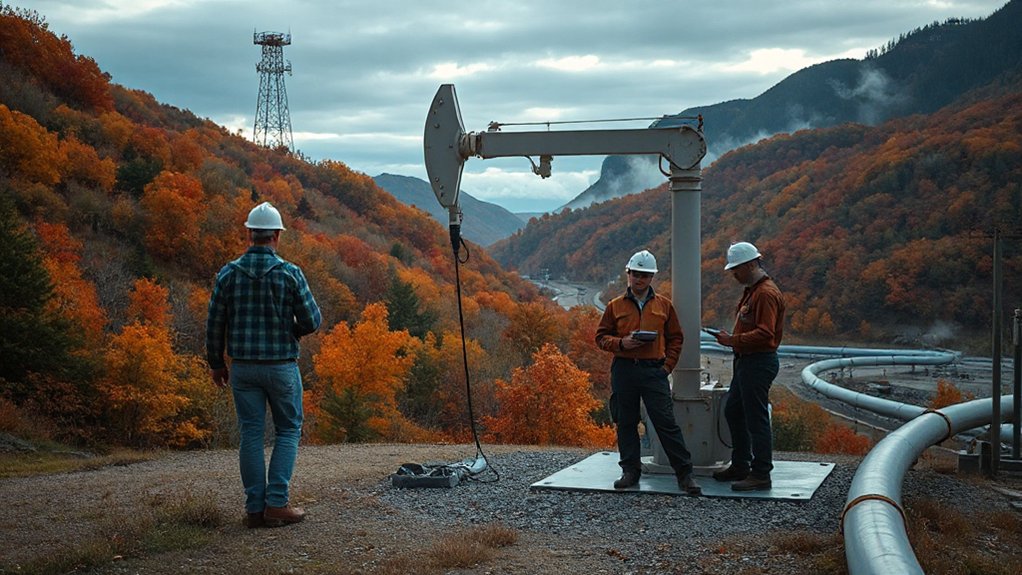While the Appalachian shale region has long been known for its natural gas production, a new technological revolution is transforming the industry. Artificial intelligence is rapidly becoming a key player in Ohio, Pennsylvania, and West Virginia’s energy landscape. These states are now attracting billions of dollars in AI data center investments due to their abundant natural gas reserves and lower costs in rural areas.
The relationship between AI and shale is creating a win-win situation. AI data centers need lots of power, and they’re choosing to build near Marcellus and Utica shale gas supplies. This creates new demand for local gas, directly connecting shale production to the growing digital economy. In Pennsylvania alone, energy and digital infrastructure investments are approaching $100 billion.
Appalachia’s natural gas fuels the AI revolution, creating a perfect symbiosis between energy production and digital innovation.
AI isn’t just consuming energy—it’s making the shale industry smarter and safer. New software tools like MidStreamAI can predict pipeline leaks months before they happen and spot equipment problems early. AI applications are also being developed for carbon capture and sequestration in the region’s geological formations. These systems analyze data to detect issues in separators and valves, allowing companies to fix problems before they become dangerous. With AI computational power doubling every 100 days, the shale industry faces both opportunity and challenge in keeping pace with the rapidly evolving technology.
Local universities are joining the movement too. Schools in West Virginia, Ohio, and Pennsylvania are researching ways AI can make shale operations more efficient and less risky. Though these technologies are still new, industry interest is growing quickly.
The economic impact is significant. AI helps producers counter natural production declines of about 5% per year. It guides cost-effective well improvements costing between $5,000 and $20,000, boosting profits without major drilling investments. Companies are using AI insights to get more gas from each well, even as national production trends downward. Expand Energy Corp. is leading this technological innovation by employing analytics and machine learning to optimize drilling operations and well performance.
Challenges remain, including infrastructure bottlenecks and permit delays. But industry leaders see the combination of shale gas and AI as a strategic advantage. As data centers, pipelines, and power plants grow together, the Appalachian Basin is positioning itself as a hub where energy and technology converge to drive economic growth.
References
- https://www.farmanddairy.com/news/artificial-intelligence-dominates-discussions-at-shale-insight-conference/887568.html
- https://www.aogr.com/magazine/cover-story/appalachian-producers-eye-improving-fundamentals-growing-demand-sectors
- https://www.prnewswire.com/news-releases/shale-insight-2025-to-spotlight-the-appalachian-basin-as-the-hub-of-americas-energy-tech-future-302546936.html
- https://www.energyintel.com/00000198-145d-db4e-a9bd-9ddffa890000
- https://www.enverus.com/newsroom/marginal-cost-of-u-s-shale-to-move-from-70-to-95-wti-by-mid-2030s/









